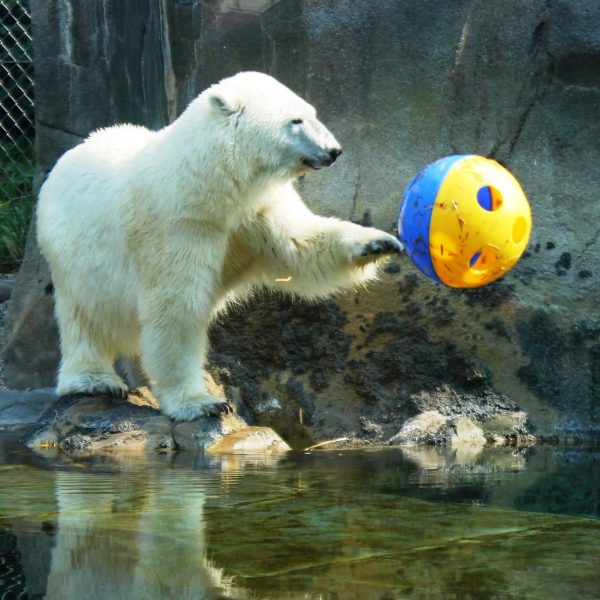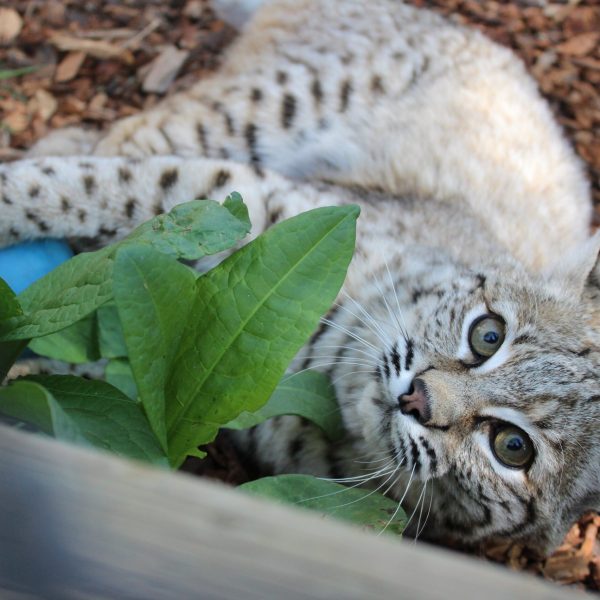Enrichment and Training

What is Enrichment?

Enrichment describes various activities where zookeepers provide animals with opportunities to learn, explore, and showcase natural behaviors. You might ask, “What is that unusual item in the exhibit?” What you’re seeing is enrichment.
Guests might see items such as piñatas, puzzle feeders, toys, and a wide variety of creative experiences we give the animals on a routine, random schedule to increase the animals’ physical and mental activity. Enrichment stimulates natural behaviors, resulting in a healthier, happier animal- which contributes to positive animal wellbeing.
Utah’s Hogle Zoo provides five types of enrichment to stimulate all of the animals’ senses and encourage a wide range of natural behaviors.
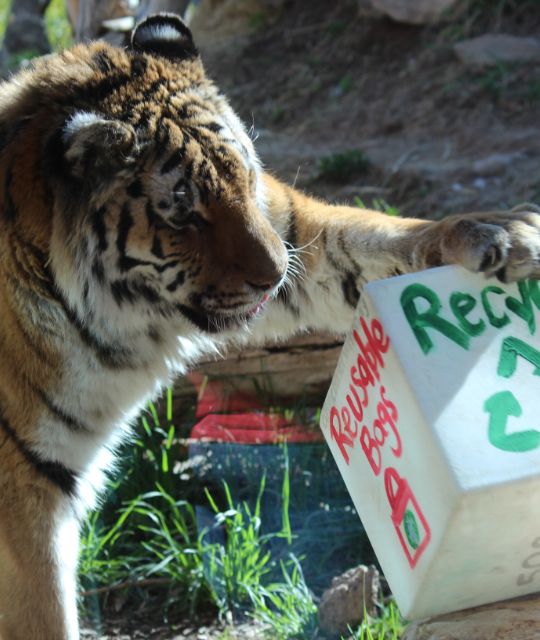
Utah’s Hogle Zoo is recognized worldwide for excellence in enrichment and training.
Enrichment Types
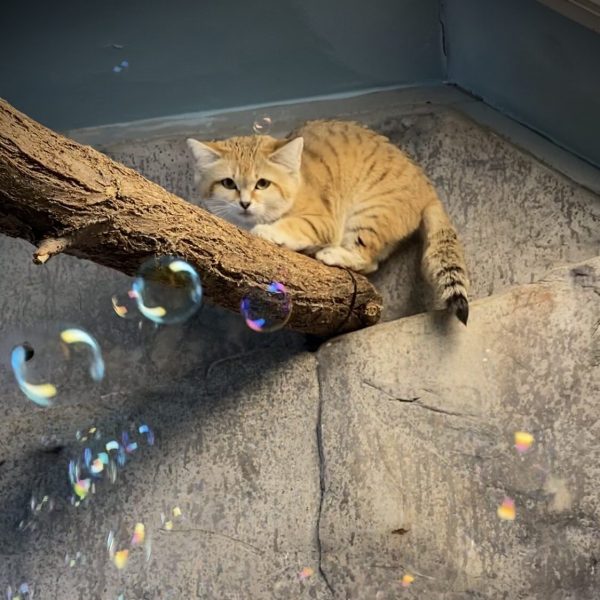
Sensory
Sensory enrichment stimulates the senses of sight, sound, smell, and touch. Sensory-based enrichment items include bubbles, television nature programs, spices, perfumes, sounds of nature audio recordings, scratching posts, and even painting on a canvas to create animal artwork.
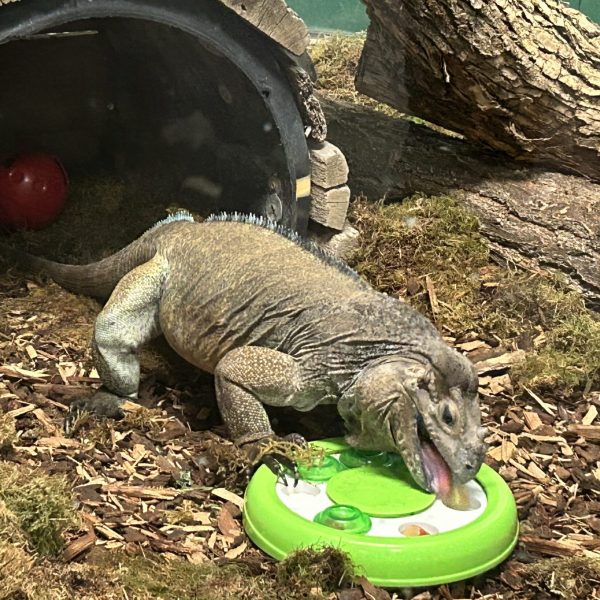
Feeding
Keepers make feeding time challenging and fun for the animals in their care through various task-oriented puzzle feeders and different methods of food presentation. These feeding methods encourage animals to think and work for their food like in their natural habitat.
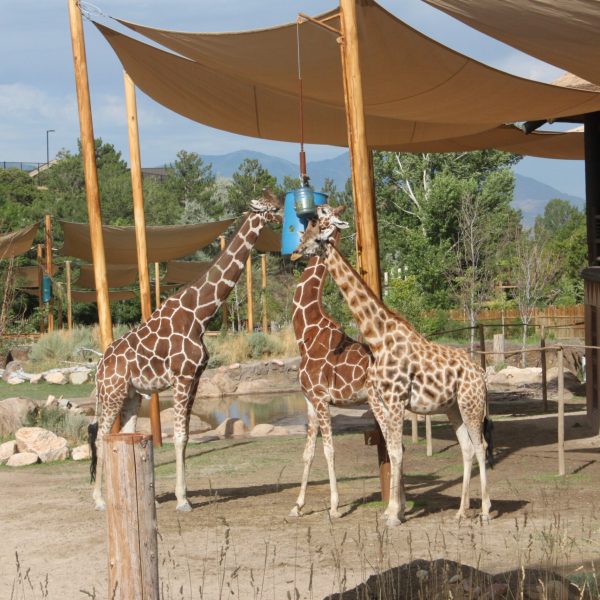
Environmental
Environmental enrichment items change and enhance the animal’s habitat by adding complexity to their homes. This type of enrichment includes swings, nesting material, ropes, climbing structures or furniture, and shelters that act as hiding places.
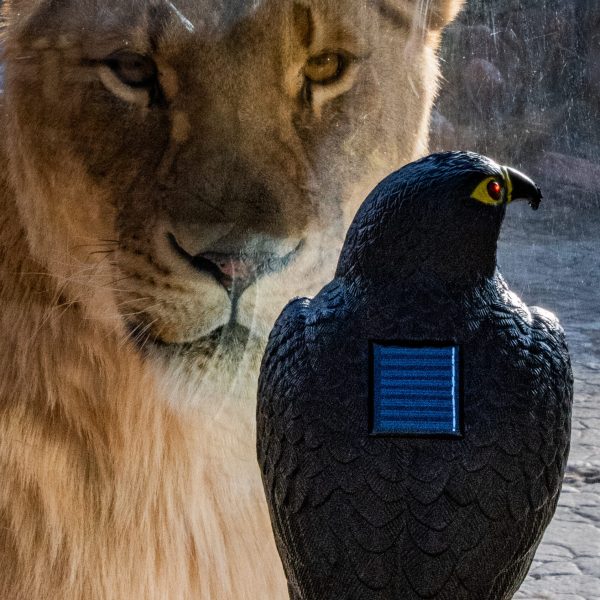
Behavioral/Social
Behavioral and social interaction from training and structured play between keepers and animals. Opportunities to interact with other animal species can also stimulate beneficial natural behaviors and instincts.
Animal Training

Animals learn through a method called conditioning that rewards them when the intended behavior is done correctly. They are rewarded with positive reinforcement- a favorite food item, playtime, or preferred interactions. Animal training is always positive and voluntary. Resident animals always have the ability to choose whether or not to participate.
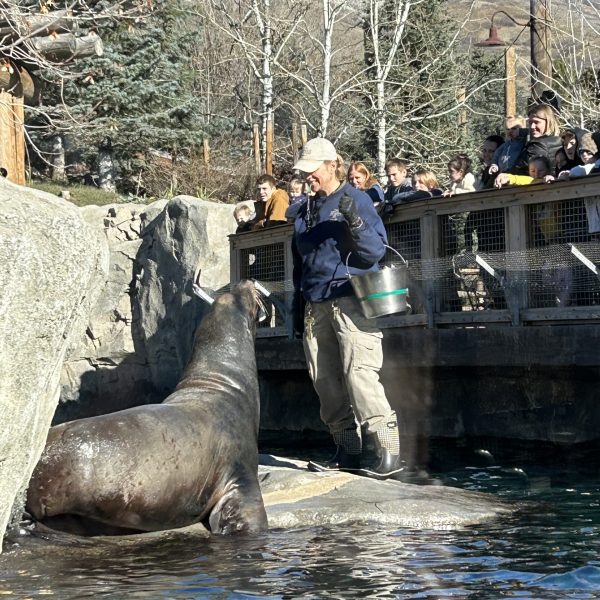
Why do we train?
Animal training is essential in building trust and relationships between a keeper and an animal. Training also promotes educational opportunities, provides mental stimulation, and enables the animals to be active participants in their own healthcare by training for necessary health checks and veterinary procedures.
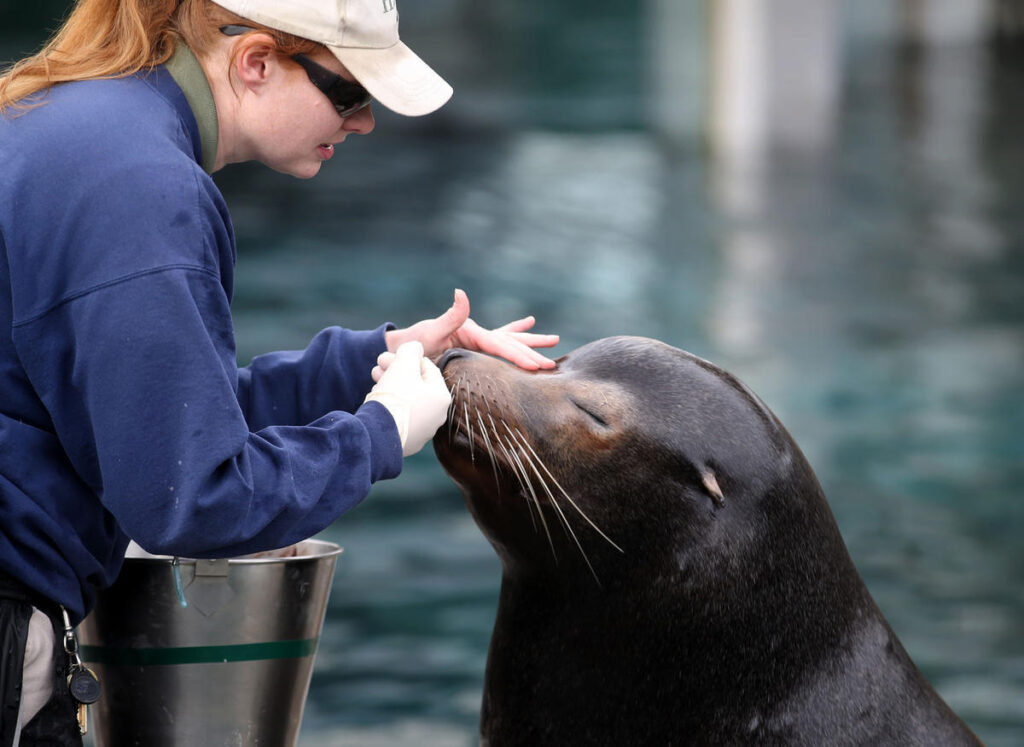
Where are training sessions held?
Keepers train the animals both on and off exhibit. Be sure to check our daily schedule on Instagram @HogleZoo each day for scheduled training sessions. We encourage guests to observe and ask questions about how training helps enhance care and promote wellbeing.
How do we train?
Our keepers train using positive reinforcement techniques. Before starting a new training program, keepers research the animals’ natural and individual history. During this time, the keepers develop a strong relationship with the animal during the trust-building stage. Then, keepers work as a team to create a training plan for each animal in their care that outlines background history, resources needed for training, and the behavioral goals of the training.
During the training, keepers utilize a whistle or clicker to create a “bridge.” The bridge tells the animal what they did is right, and the animal associates the bridge with a reward. The bridge helps bridge the time between the correct behavior and the reward delivery.
One basic behavior we train the animals to do is called “target.” Animals are trained to touch a body part, such as a nose, paw, hip or flipper, to a pre-determined object. The animal is then rewarded when they target correctly. The purpose of this behavior is to help guide the animal’s body movement and position. Once the target behavior has been trained, many other behaviors can be trained, such as crating, sitting on a scale for weights, and positioning for voluntary veterinary care like an open mouth, chest for stethoscope, or even blood draws for health checks.
